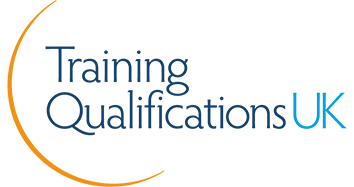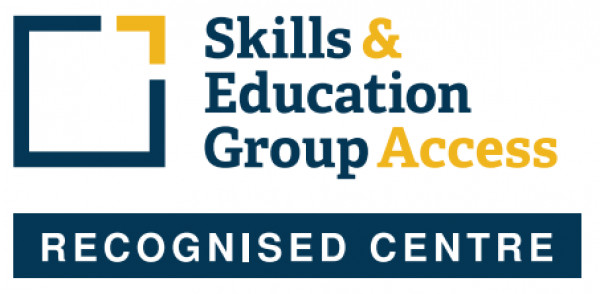Human Physiology and Health
 85.5%
85.5%
- SALE Savings End Midnight Wednesday 30th April
- SALE Savings End Midnight Wednesday 30th April
Human Physiology and Health
Human Physiology and Health is the study of human beings - the structure of our bodies, the way they work (and sometimes go wrong!) and the way in which we are related to other living things. It is much the same thing as Human Biology.
However, less emphasis is placed on the importance of comparing human attributes with those of other organisms, and on examining our relationships with them. More emphasis is placed on the physiology of the human body, and the way in which we are able to perceive and react to our environment.
Modules
Module One: Essential Principles
1. Living Things
- To distinguish between living and non-living things.
- To see where human beings fit into the wide range of living things.
- To use a key to classify something.
- To find out about the way living things are constructed.
- To use a simple microscope.
2. The Chemistry of Life
- To discover how chemicals, including water, move in and out of cells.
- To learn something of the main chemicals of which all organisms are made.
- To experiment with an enzyme to find out the properties of these special chemicals.
Module Two: Energy and Respiration
3. Diet and the Respiratory System
- To find out which biological chemicals are present in some foods.
- To produce a balanced diet sheet for one day.
- To see how food provides us with energy.
- To learn the long-term effects of regular exercise on the functioning of the respiratory system and the advantages of these effects.
4. Digesting and using food
- To study the structure of teeth and work out how to care for them.
- To find out how food is digested in the body.
- To learn about what happens to digested food.
5. Photosynthesis, Food Chains and Webs
- To do experiments to show how plants make food.
- To understand the life processes of photosynthesis, respiration and reproduction and how these enable green plants to survive in their environment.
- To understand food chains as a way of representing feeding relationships in an ecosystem.
- To learn about how some insects can affect our lives.
6. The Respiratory System
- To discover how and why we breathe.
- To find out the long-term effects of regular exercise on the functioning of the respiratory system.
- To identify the effects of regular smoking on the functioning of the respiratory system.
- To think about the causes of respiratory diseases.
Module Three : Perception and Reaction
7. Receiving information
- To discover how we receive information from the world around us.
- To compare the main human senses of sight, hearing, touch, taste and smell with the response of plants to light and gravity.
- To relate the structure of an eye to its function.
8. Acting on information
- To discover some of the ways in which the body reacts to information.
- To find out something about nerves, the spinal cord and the brain.
- To learn about the role of hormones.
Module Four: Physiology and Homeostasis
9. The Blood Circulatory System
- To find out what blood is.
- To describe the position, external structure and internal structure of the heart.
- To learn the structure and relationship of the arteries, capillaries and veins.
- To dissect a heart and see how its structure relates to its function to maintain a one-way flow of blood around the body.
10. Excretion
- To find out how and why we need to remove waste products.
- To dissect a kidney and relate its structure to its function.
- To apply knowledge of the kidneys to the problems of kidney failure.
11. Homeostasis
- To describe how the internal environment in plants, animals and the human embryo is maintained.
- To find out about the skin.
- To learn something about the brain as the centre of co-ordination and about mental health.
12. Skeleton and Muscles
- To demonstrate that the skeleton is composed of bone, cartilage, white fibrous tissue and yellow elastic tissue.
- To discover some facts about bones, including the basic anatomy of the skeleton with the names of the long bones of the limbs, the girdles, the regions of the vertebral column and the generalised structure of a vertebra.
- To find out how muscles and bones help us move.
- To work out how we should stand, sit and move.
Module Five: Reproduction and Variation
13. Reproduction
- To relate the structure of the male and female reproductive systems to their functions.
- To learn about how fertilisation takes place.
- To see how different methods of contraception are based on biological knowledge.
14. Development
- To learn about what happens during a normal pregnancy and to use this information to see how to care for the mother and unborn baby.
- To find out about how a baby is born.
- To discover how a child grows and changes into an adult.
- To learn about aging.
15. Genetics
- To become familiar with the words used in the study of genetics.
- To learn how information in the form of genes is passed from one generation to the next.
- To understand the principles of a monohybrid cross involving dominant and recessive alleles.
- To work out the probability of a certain characteristic appearing in an individual.
16. Variation and Selection
- To learn about what biologists mean by the term variation.
- To show that sexual and asexual reproduction can be compared in terms of passing of information from one generation to the next.
- To find out how natural selection of a characteristic can lead to evolution.
- To work out how we can use our knowledge of genetics for food production.
Module Six: Humans and their Environment
17. Micro-Organisms and Health
- To discover some of the ways in which we use micro-organisms.
- To show how food should be stored, and how it should be handled during preparation.
- To learn how disease-causing micro-organisms are removed from water intended for drinking, cooking and washing.
18. Defence of the Body against Infection and Illness
- To show that the body has a number of ways of preventing the entry of pathogens.
- To understand how infection with a disease can result in future immunity, and to work out the best ways of preventing or treating some diseases.
- To develop your knowledge of the part played by white blood cells in dealing with infection.
- To consider the use and abuse of drugs.
19. Treating Injury and Illness
- To look at ways in which our bodies can cure health problems.
- To examine health problems that ourbodies cannot cure without assistance.
20. Human Populations and Ecosystems
- To understand some of the problems caused by large populations.
- To discover how sewage and refuse is disposed of.
- To consider the importance of planning land use.
- To understand that the impact of human activity on the Earth is related to the size of the population, economic factors and industrial requirements.
21. Practical Ecology
- To find out about how nature recycles chemicals.
- To discover how we can recycle materials.
- To distinguish between renewable and non-renewable energy sources.
- To realise the importance of clean air and water.
- To consider how we can conserve our environment.
Entry Requirements
There is no experience or previous qualifications required for enrolment on this course. It is available to all students, of all academic backgrounds.
All course fees, inclusive of all payment plans including our Premium Credit Limited option, must be settled before certification can be ordered.
*You will have access to the course for 24 months.

Assessment Method
After each lesson there will be a question paper, which needs to be completed and submitted to your personal tutor for marking. This method of continual assessment ensures that your personal tutor can consistently monitor your progress and provide you with assistance throughout the duration of the course.
What's Included
- All study materials
- Study Guide
- Full Tutor and Admin support
On successful completion of your course you will receive the learndirect Certificate of Completion of Training in Human Physiology and Health.
Your course certificate will also state the number of CPD points/hours the course is eligible for.
View a sample of the certificate (opens in new window)
learndirect is one of the largest integrated providers of courses and qualifications, training, and employment services in the UK
- Each year around 6,000 businesses equip their staff for success with learndirect
- learndirect have helped more than 75,000 businesses equip their employees with the skills needed to improve productivity.
- Almost 700,000 maths and English test passes have been achieved with learndirect.
- 300,000 people fulfilled their career ambitions last year with learndirect.
- Over 250,000 apprentices have achieved with learndirect.
- SALE Savings End Midnight Wednesday 30th April
- SALE Savings End Midnight Wednesday 30th April
Human Physiology and Health
Human Physiology and Health is the study of human beings - the structure of our bodies, the way they work (and sometimes go wrong!) and the way in which we are related to other living things. It is much the same thing as Human Biology.
However, less emphasis is placed on the importance of comparing human attributes with those of other organisms, and on examining our relationships with them. More emphasis is placed on the physiology of the human body, and the way in which we are able to perceive and react to our environment.
Modules
Module One: Essential Principles
1. Living Things
- To distinguish between living and non-living things.
- To see where human beings fit into the wide range of living things.
- To use a key to classify something.
- To find out about the way living things are constructed.
- To use a simple microscope.
2. The Chemistry of Life
- To discover how chemicals, including water, move in and out of cells.
- To learn something of the main chemicals of which all organisms are made.
- To experiment with an enzyme to find out the properties of these special chemicals.
Module Two: Energy and Respiration
3. Diet and the Respiratory System
- To find out which biological chemicals are present in some foods.
- To produce a balanced diet sheet for one day.
- To see how food provides us with energy.
- To learn the long-term effects of regular exercise on the functioning of the respiratory system and the advantages of these effects.
4. Digesting and using food
- To study the structure of teeth and work out how to care for them.
- To find out how food is digested in the body.
- To learn about what happens to digested food.
5. Photosynthesis, Food Chains and Webs
- To do experiments to show how plants make food.
- To understand the life processes of photosynthesis, respiration and reproduction and how these enable green plants to survive in their environment.
- To understand food chains as a way of representing feeding relationships in an ecosystem.
- To learn about how some insects can affect our lives.
6. The Respiratory System
- To discover how and why we breathe.
- To find out the long-term effects of regular exercise on the functioning of the respiratory system.
- To identify the effects of regular smoking on the functioning of the respiratory system.
- To think about the causes of respiratory diseases.
Module Three : Perception and Reaction
7. Receiving information
- To discover how we receive information from the world around us.
- To compare the main human senses of sight, hearing, touch, taste and smell with the response of plants to light and gravity.
- To relate the structure of an eye to its function.
8. Acting on information
- To discover some of the ways in which the body reacts to information.
- To find out something about nerves, the spinal cord and the brain.
- To learn about the role of hormones.
Module Four: Physiology and Homeostasis
9. The Blood Circulatory System
- To find out what blood is.
- To describe the position, external structure and internal structure of the heart.
- To learn the structure and relationship of the arteries, capillaries and veins.
- To dissect a heart and see how its structure relates to its function to maintain a one-way flow of blood around the body.
10. Excretion
- To find out how and why we need to remove waste products.
- To dissect a kidney and relate its structure to its function.
- To apply knowledge of the kidneys to the problems of kidney failure.
11. Homeostasis
- To describe how the internal environment in plants, animals and the human embryo is maintained.
- To find out about the skin.
- To learn something about the brain as the centre of co-ordination and about mental health.
12. Skeleton and Muscles
- To demonstrate that the skeleton is composed of bone, cartilage, white fibrous tissue and yellow elastic tissue.
- To discover some facts about bones, including the basic anatomy of the skeleton with the names of the long bones of the limbs, the girdles, the regions of the vertebral column and the generalised structure of a vertebra.
- To find out how muscles and bones help us move.
- To work out how we should stand, sit and move.
Module Five: Reproduction and Variation
13. Reproduction
- To relate the structure of the male and female reproductive systems to their functions.
- To learn about how fertilisation takes place.
- To see how different methods of contraception are based on biological knowledge.
14. Development
- To learn about what happens during a normal pregnancy and to use this information to see how to care for the mother and unborn baby.
- To find out about how a baby is born.
- To discover how a child grows and changes into an adult.
- To learn about aging.
15. Genetics
- To become familiar with the words used in the study of genetics.
- To learn how information in the form of genes is passed from one generation to the next.
- To understand the principles of a monohybrid cross involving dominant and recessive alleles.
- To work out the probability of a certain characteristic appearing in an individual.
16. Variation and Selection
- To learn about what biologists mean by the term variation.
- To show that sexual and asexual reproduction can be compared in terms of passing of information from one generation to the next.
- To find out how natural selection of a characteristic can lead to evolution.
- To work out how we can use our knowledge of genetics for food production.
Module Six: Humans and their Environment
17. Micro-Organisms and Health
- To discover some of the ways in which we use micro-organisms.
- To show how food should be stored, and how it should be handled during preparation.
- To learn how disease-causing micro-organisms are removed from water intended for drinking, cooking and washing.
18. Defence of the Body against Infection and Illness
- To show that the body has a number of ways of preventing the entry of pathogens.
- To understand how infection with a disease can result in future immunity, and to work out the best ways of preventing or treating some diseases.
- To develop your knowledge of the part played by white blood cells in dealing with infection.
- To consider the use and abuse of drugs.
19. Treating Injury and Illness
- To look at ways in which our bodies can cure health problems.
- To examine health problems that ourbodies cannot cure without assistance.
20. Human Populations and Ecosystems
- To understand some of the problems caused by large populations.
- To discover how sewage and refuse is disposed of.
- To consider the importance of planning land use.
- To understand that the impact of human activity on the Earth is related to the size of the population, economic factors and industrial requirements.
21. Practical Ecology
- To find out about how nature recycles chemicals.
- To discover how we can recycle materials.
- To distinguish between renewable and non-renewable energy sources.
- To realise the importance of clean air and water.
- To consider how we can conserve our environment.
Entry Requirements
There is no experience or previous qualifications required for enrolment on this course. It is available to all students, of all academic backgrounds.
All course fees, inclusive of all payment plans including our Premium Credit Limited option, must be settled before certification can be ordered.
*You will have access to the course for 24 months.

Assessment
Assessment Method
After each lesson there will be a question paper, which needs to be completed and submitted to your personal tutor for marking. This method of continual assessment ensures that your personal tutor can consistently monitor your progress and provide you with assistance throughout the duration of the course.
What's Included
- All study materials
- Study Guide
- Full Tutor and Admin support
Qualifications
On successful completion of your course you will receive the learndirect Certificate of Completion of Training in Human Physiology and Health.
Your course certificate will also state the number of CPD points/hours the course is eligible for.
View a sample of the certificate (opens in new window)
learndirect is one of the largest integrated providers of courses and qualifications, training, and employment services in the UK
- Each year around 6,000 businesses equip their staff for success with learndirect
- learndirect have helped more than 75,000 businesses equip their employees with the skills needed to improve productivity.
- Almost 700,000 maths and English test passes have been achieved with learndirect.
- 300,000 people fulfilled their career ambitions last year with learndirect.
- Over 250,000 apprentices have achieved with learndirect.
 85.5%
85.5%
learning
learning hours





















 If you find this course cheaper anywhere
If you find this course cheaper anywhere

